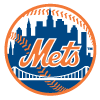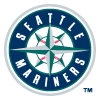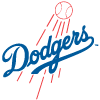It's good to be back. Thanks to Dan Marcus for filling in on this column for the past two weeks. What was supposed to be a two-week absence due to a pair of weddings turned into a two-week absence due to one wedding and a battle with COVID-19, but thankfully neither I nor anyone in my family was hit all that hard.
I've returned from the COVID-19 injured list at a very exciting point in the season, as the trade deadline has shaken up depth charts around the league. The deadline was one of the most exciting ones in recent memory, though that's a given when a player of Juan Soto's caliber gets moved.
You just don't see players this young and this talented move very often, especially not when they're more than a rental. Mookie Betts, for example, was in a similar tier of talent when he moved from the Red Sox to the Dodgers a few years ago, but he was 27 years old, not 23 like Soto, and he only had one year of team control left. Furthermore, that deal happened in the offseason.
While the Soto deal by itself made the deadline an exciting one, the young outfielder was far from the only significant name on the move last week. Even in that same deal, the Padres' acquisition of Josh Bell should be quite impactful, as the team finally added a big offensive contributor at a position that had been occupied by Eric Hosmer
It's good to be back. Thanks to Dan Marcus for filling in on this column for the past two weeks. What was supposed to be a two-week absence due to a pair of weddings turned into a two-week absence due to one wedding and a battle with COVID-19, but thankfully neither I nor anyone in my family was hit all that hard.
I've returned from the COVID-19 injured list at a very exciting point in the season, as the trade deadline has shaken up depth charts around the league. The deadline was one of the most exciting ones in recent memory, though that's a given when a player of Juan Soto's caliber gets moved.
You just don't see players this young and this talented move very often, especially not when they're more than a rental. Mookie Betts, for example, was in a similar tier of talent when he moved from the Red Sox to the Dodgers a few years ago, but he was 27 years old, not 23 like Soto, and he only had one year of team control left. Furthermore, that deal happened in the offseason.
While the Soto deal by itself made the deadline an exciting one, the young outfielder was far from the only significant name on the move last week. Even in that same deal, the Padres' acquisition of Josh Bell should be quite impactful, as the team finally added a big offensive contributor at a position that had been occupied by Eric Hosmer for far too long. Elsewhere, the Yankees and Mariners added frontline starters in Frankie Montas and Luis Castillo, while the contending Brewers made a move for the future by sending Josh Hader to San Diego.
Some of the big names that moved at the deadline didn't see their fantasy appeal change much. Soto, for example, will now be surrounded by a much better lineup, but that comes at the cost of a fairly significant park downgrade, resulting in more or less a wash. Many movers did see their values jump, however, and they'll be included here. Perhaps the most notable fantasy shakeups at the deadline involved relievers changing teams, altering the landscape for saves down the stretch. You can read more on that topic from Ryan Rufe here, as well as in a few of the breakdowns below.
RISERS
 Jacob deGrom, Mets: We interrupt our regularly scheduled trade deadline programming to bring you breaking news: Jacob deGrom is back, and he's still Jacob deGrom. In two starts since his return from a shoulder injury, he owns a simply stupid 50 percent strikeout rate. To put it in other terms, he's faced 36 batters, 18 of whom have struck out and just five of whom have reached base, four by a hit and one by a walk. If you're still trying to wrap your mind around that, try this: batters are hitting .114/.139/.229 against him. His stuff is as ridiculous as ever, as he still has his 99.4 mph fastball and his 93.3 mph slider. He's thrown the latter pitch 40.0 percent of the time, leaving him as almost a two-pitch pitcher, though it's hard to say the setup isn't working. Fears of another injury won't be going away anytime soon, due both to his age (34) and an inability to accept that a human arm can hold up while throwing baseball at such ludicrous speeds, but deGrom seems like a lock to continue his usual dominance for as long as his body allows.
Jacob deGrom, Mets: We interrupt our regularly scheduled trade deadline programming to bring you breaking news: Jacob deGrom is back, and he's still Jacob deGrom. In two starts since his return from a shoulder injury, he owns a simply stupid 50 percent strikeout rate. To put it in other terms, he's faced 36 batters, 18 of whom have struck out and just five of whom have reached base, four by a hit and one by a walk. If you're still trying to wrap your mind around that, try this: batters are hitting .114/.139/.229 against him. His stuff is as ridiculous as ever, as he still has his 99.4 mph fastball and his 93.3 mph slider. He's thrown the latter pitch 40.0 percent of the time, leaving him as almost a two-pitch pitcher, though it's hard to say the setup isn't working. Fears of another injury won't be going away anytime soon, due both to his age (34) and an inability to accept that a human arm can hold up while throwing baseball at such ludicrous speeds, but deGrom seems like a lock to continue his usual dominance for as long as his body allows.
 Luis Castillo, SP, Mariners: The fantasy world should be pretty familiar with the difference in the park factors between Cincinnati and Seattle at this point, as the two organizations previously swapped several players over the offseason. While the move West hurts the production of hitters like Jesse Winker and Eugenio Suarez, it should have the inverse effect for Castillo. The righty has historically been a strong groundball pitcher (albeit to a lesser extent this season), so leaving the league's most homer-friendly park benefits him less than it might help some other pitchers, but the overall effect should still be about as significant as it gets. Per Statcast's park factors, Great American Ball Park increases scoring more than any park other than Coors Field, while no stadium suppresses runs as well as T-Mobile Park does. Toss in the fact that Castillo suddenly finds himself surrounded by a much stronger roster, which should give him a far easier path to wins, and you hardly could have asked for a better landing spot for the 29-year-old righty.
Luis Castillo, SP, Mariners: The fantasy world should be pretty familiar with the difference in the park factors between Cincinnati and Seattle at this point, as the two organizations previously swapped several players over the offseason. While the move West hurts the production of hitters like Jesse Winker and Eugenio Suarez, it should have the inverse effect for Castillo. The righty has historically been a strong groundball pitcher (albeit to a lesser extent this season), so leaving the league's most homer-friendly park benefits him less than it might help some other pitchers, but the overall effect should still be about as significant as it gets. Per Statcast's park factors, Great American Ball Park increases scoring more than any park other than Coors Field, while no stadium suppresses runs as well as T-Mobile Park does. Toss in the fact that Castillo suddenly finds himself surrounded by a much stronger roster, which should give him a far easier path to wins, and you hardly could have asked for a better landing spot for the 29-year-old righty.
 Tyler Mahle, SP, Reds: Mahle wasn't the only player to escape Cincinnati last week. Mahle is also out the door, having moved to Minnesota for a package of prospects. Target Field may not suppress scoring to quite the same extent as T-Mobile Park, but it's still one of the better venues at which to pitch in the league and represents a huge upgrade from Great American Ball Park. Mahle is also better positioned than Castillo to take advantage of the change in home run park factors in particular, as trouble keeping the ball on the ground has bothered him throughout his career. His 36.6 percent groundball rate this season ranks eighth-worst among qualified starters. Of course, Mahle showed no respect for that narrative in his Twins debut, as he allowed three homers in a home start against Toronto, but it still seems wise to expect fewer homers going forward as well as a better shot at wins.
Tyler Mahle, SP, Reds: Mahle wasn't the only player to escape Cincinnati last week. Mahle is also out the door, having moved to Minnesota for a package of prospects. Target Field may not suppress scoring to quite the same extent as T-Mobile Park, but it's still one of the better venues at which to pitch in the league and represents a huge upgrade from Great American Ball Park. Mahle is also better positioned than Castillo to take advantage of the change in home run park factors in particular, as trouble keeping the ball on the ground has bothered him throughout his career. His 36.6 percent groundball rate this season ranks eighth-worst among qualified starters. Of course, Mahle showed no respect for that narrative in his Twins debut, as he allowed three homers in a home start against Toronto, but it still seems wise to expect fewer homers going forward as well as a better shot at wins.
 Devin Williams, RP, Brewers: Williams himself didn't seem thrilled about the Brewers' decision to send Josh Hader to San Diego:
Devin Williams, RP, Brewers: Williams himself didn't seem thrilled about the Brewers' decision to send Josh Hader to San Diego:
Here is Devin Williams' reaction to Josh Hader being traded by the Brewers. pic.twitter.com/ziSJaXBzaI
— Adam McCalvy (@AdamMcCalvy) August 2, 2022
Those who held onto Williams despite his status as a setup man will be viewing the move very differently, however. Williams easily could have closed for just about any team that didn't have Hader on it over the past few seasons. Among relievers who have thrown at least 100 innings since 2020, Williams ranks second in ERA (1.77), second in FIP (1.97), first in xFIP (2.19) and second in strikeout rate (42.4 percent), yet he's merely tied for 41st in saves (10) thanks to Hader's presence. While the Brewers did get back Taylor Rogers in the deal, it was Williams who secured the team's first post-Hader save Friday against the Reds despite the fact that he'd pitched on each of the previous two days. Given that Rogers struggled significantly in the month leading up to his move, it seems as though the ninth inning should belong to Williams, which means the Brewers may well not even notice a drop in the quality of pitching they receive in that frame.
 Felix Bautista, RP, Orioles: It's often the players who stay put who see their fantasy values change the most at the deadline. The Orioles haven't officially announced a new closer after they sent Jorge Lopez to the Twins at the deadline and are supposedly aiming to use a committee approach, but the numbers suggest pretty clearly that Bautista should be the guy. Despite just making his debut this year at age 26, he's cruised to an excellent 1.77 ERA in 45.2 frames, a number that looks like only a modest overachievement next to his 2.62 xFIP and 2.34 SIERA. He's gotten to those marks by combining an excellent 35.8 percent strikeout rate with league-average walk and groundball rates, a line that looks like clear closer material. Even if the Orioles are nominally using a committee for now, it's hard to see that lasting long given how obvious of a choice Bautista is. He recorded the Orioles' first save after the deadline Friday against the Pirates, and I'd bet on him recording the next several as well.
Felix Bautista, RP, Orioles: It's often the players who stay put who see their fantasy values change the most at the deadline. The Orioles haven't officially announced a new closer after they sent Jorge Lopez to the Twins at the deadline and are supposedly aiming to use a committee approach, but the numbers suggest pretty clearly that Bautista should be the guy. Despite just making his debut this year at age 26, he's cruised to an excellent 1.77 ERA in 45.2 frames, a number that looks like only a modest overachievement next to his 2.62 xFIP and 2.34 SIERA. He's gotten to those marks by combining an excellent 35.8 percent strikeout rate with league-average walk and groundball rates, a line that looks like clear closer material. Even if the Orioles are nominally using a committee for now, it's hard to see that lasting long given how obvious of a choice Bautista is. He recorded the Orioles' first save after the deadline Friday against the Pirates, and I'd bet on him recording the next several as well.
 Joey Gallo, OF, Dodgers: I remain somewhat skeptical of any "can't handle New York" narratives, as the city tends to claim sole ownership of many things that can be found in any large city in America such as pressure from fans and the media, but if there was ever a player in need of a change of scenery, it was Gallo. His .159/.282/.339 slash line as a Yankee this year was clearly getting to him, and he'd fallen out of favor in New York after the team acquired Andrew Benintendi. It's not as if he's found himself out of the public eye as a member of the Dodgers, but he'll at least be getting a fresh start. The Dodgers are widely considered a smart organization that gets the most out of its players, so there's a chance that having new voices in his ear will help him turn things around. He'll need a major turnaround to be a significant asset down the stretch, as his 39.3 percent strikeout rate has reached an untenable level, but his incredible power makes him worth a flier if he's been dropped in your league.
Joey Gallo, OF, Dodgers: I remain somewhat skeptical of any "can't handle New York" narratives, as the city tends to claim sole ownership of many things that can be found in any large city in America such as pressure from fans and the media, but if there was ever a player in need of a change of scenery, it was Gallo. His .159/.282/.339 slash line as a Yankee this year was clearly getting to him, and he'd fallen out of favor in New York after the team acquired Andrew Benintendi. It's not as if he's found himself out of the public eye as a member of the Dodgers, but he'll at least be getting a fresh start. The Dodgers are widely considered a smart organization that gets the most out of its players, so there's a chance that having new voices in his ear will help him turn things around. He'll need a major turnaround to be a significant asset down the stretch, as his 39.3 percent strikeout rate has reached an untenable level, but his incredible power makes him worth a flier if he's been dropped in your league.
 Brandon Marsh, OF, Phillies: The Phillies' acquisition of Marsh was one of the more intriguing moves of the deadline. Marsh fills a gaping hole in the Phillies' outfield defense, and while his bat comes with major question marks, he's just 24 years old and comes with 5.5 years of team control, so he has plenty of time to sort those out. There's still very much a chance that he never figures things out, as his 35.2 percent strikeout rate through the first 167 games of his big-league career may be unsalvageably high. Just three players who came to the plate at least 500 times over the last two years have a higher strikeout rate: Joey Gallo, Patrick Wisdom and Brett Phillips. That last name is a potentially worrying comp for Marsh, as Phillips is also a strong defender in center field who has power and speed, but serious contact concerns. If working with a new set of hitting coaches can massage Marsh's strikeout rate down into high 20s, however, he could become quite an interesting player, with his defense keeping him in the lineup and his great home park boosting his numbers.
Brandon Marsh, OF, Phillies: The Phillies' acquisition of Marsh was one of the more intriguing moves of the deadline. Marsh fills a gaping hole in the Phillies' outfield defense, and while his bat comes with major question marks, he's just 24 years old and comes with 5.5 years of team control, so he has plenty of time to sort those out. There's still very much a chance that he never figures things out, as his 35.2 percent strikeout rate through the first 167 games of his big-league career may be unsalvageably high. Just three players who came to the plate at least 500 times over the last two years have a higher strikeout rate: Joey Gallo, Patrick Wisdom and Brett Phillips. That last name is a potentially worrying comp for Marsh, as Phillips is also a strong defender in center field who has power and speed, but serious contact concerns. If working with a new set of hitting coaches can massage Marsh's strikeout rate down into high 20s, however, he could become quite an interesting player, with his defense keeping him in the lineup and his great home park boosting his numbers.
FALLERS
 Raisel Iglesias, RP, Atlanta: There weren't many teams Iglesias could have been traded to that would have resulted in him losing his closer job, but he seems to have landed in one such spot. There's been no indication the Iglesias acquisition will displace veteran Kenley Jansen from his closer job, a decision that seems fair enough. While Jansen has shown hints of weakness in recent seasons, keeping him in the ninth inning is as much about his performance this year as his 374 career saves, as he owns a 3.59 ERA while striking out 34.4 percent of opposing batters and walking just 6.9 percent. Iglesias has had similar results, as his 3.93 ERA looks worse than he deserves judging by his 33.0 percent strikeout rate and 6.0 percent walk rate, but there's little reason to suspect the incumbent Jansen will give up the role unless he starts to slump. Iglesias gives Atlanta insurance in case Jansen's heart troubles resurface and should be well positioned to close next year after Jansen hits free agency, but he may not receive more than a save or two down the stretch this season.
Raisel Iglesias, RP, Atlanta: There weren't many teams Iglesias could have been traded to that would have resulted in him losing his closer job, but he seems to have landed in one such spot. There's been no indication the Iglesias acquisition will displace veteran Kenley Jansen from his closer job, a decision that seems fair enough. While Jansen has shown hints of weakness in recent seasons, keeping him in the ninth inning is as much about his performance this year as his 374 career saves, as he owns a 3.59 ERA while striking out 34.4 percent of opposing batters and walking just 6.9 percent. Iglesias has had similar results, as his 3.93 ERA looks worse than he deserves judging by his 33.0 percent strikeout rate and 6.0 percent walk rate, but there's little reason to suspect the incumbent Jansen will give up the role unless he starts to slump. Iglesias gives Atlanta insurance in case Jansen's heart troubles resurface and should be well positioned to close next year after Jansen hits free agency, but he may not receive more than a save or two down the stretch this season.
 Mark Canha, OF, Mets: Canha joined the Mets on a two-year deal over the winter, and his .263/.360/.367 slash line (good for a 117 wRC+) suggests the team has no need to replace him. The Mets may have done just that with their acquisition of Tyler Naquin from the Reds, however. Naquin hits left-handed while Canha is a righty, and it appears that the Mets' intention is to split time evenly in left field rather than having Naquin merely serve as the fourth outfielder. In the last 10 games, Canha has started against both lefties the Mets have faced but has been in the lineup against just three out of eight righties. A platoon setup doesn't necessarily suit Canha, who actually owns reverse splits for his career, posting a 121 wRC+ against same-sided pitching and a 105 wRC+ against southpaws. It may take a bit more time to figure out exactly how often Canha will be in the lineup down the stretch, but it's clear that Naquin's arrival at minimum represents a meaningful dent in his playing time, fairly or not.
Mark Canha, OF, Mets: Canha joined the Mets on a two-year deal over the winter, and his .263/.360/.367 slash line (good for a 117 wRC+) suggests the team has no need to replace him. The Mets may have done just that with their acquisition of Tyler Naquin from the Reds, however. Naquin hits left-handed while Canha is a righty, and it appears that the Mets' intention is to split time evenly in left field rather than having Naquin merely serve as the fourth outfielder. In the last 10 games, Canha has started against both lefties the Mets have faced but has been in the lineup against just three out of eight righties. A platoon setup doesn't necessarily suit Canha, who actually owns reverse splits for his career, posting a 121 wRC+ against same-sided pitching and a 105 wRC+ against southpaws. It may take a bit more time to figure out exactly how often Canha will be in the lineup down the stretch, but it's clear that Naquin's arrival at minimum represents a meaningful dent in his playing time, fairly or not.
 Kyle Lewis, OF, Mariners: Life hasn't been fair to Lewis lately. A torn meniscus ended his 2021 campaign after just 36 games and prevented him from making his 2022 debut until late May. He made it just four games before suffering a concussion that kept him out for nearly two more months. He's only appeared in 13 games since returning from that second injury, so it would be unwise to overreact, but his .100/.200/.175 slash line and 37.8 percent strikeout rate are nowhere near good enough. The Mariners are in a tight playoff race and can't afford to wait for him to figure things out, so he's begun to lose playing time, starting just one of the last four games. With Mitch Haniger back from an ankle injury and Jarred Kelenic back from Triple-A, playing time isn't going to be any easier for Lewis to come by going forward. I still think there's plenty of reason to like Lewis' bat, as he owns a career 13.2 percent barrel rate and cut his strikeout rate to 25.2 percent last year, but he doesn't need to occupy a roster spot at the moment.
Kyle Lewis, OF, Mariners: Life hasn't been fair to Lewis lately. A torn meniscus ended his 2021 campaign after just 36 games and prevented him from making his 2022 debut until late May. He made it just four games before suffering a concussion that kept him out for nearly two more months. He's only appeared in 13 games since returning from that second injury, so it would be unwise to overreact, but his .100/.200/.175 slash line and 37.8 percent strikeout rate are nowhere near good enough. The Mariners are in a tight playoff race and can't afford to wait for him to figure things out, so he's begun to lose playing time, starting just one of the last four games. With Mitch Haniger back from an ankle injury and Jarred Kelenic back from Triple-A, playing time isn't going to be any easier for Lewis to come by going forward. I still think there's plenty of reason to like Lewis' bat, as he owns a career 13.2 percent barrel rate and cut his strikeout rate to 25.2 percent last year, but he doesn't need to occupy a roster spot at the moment.

































